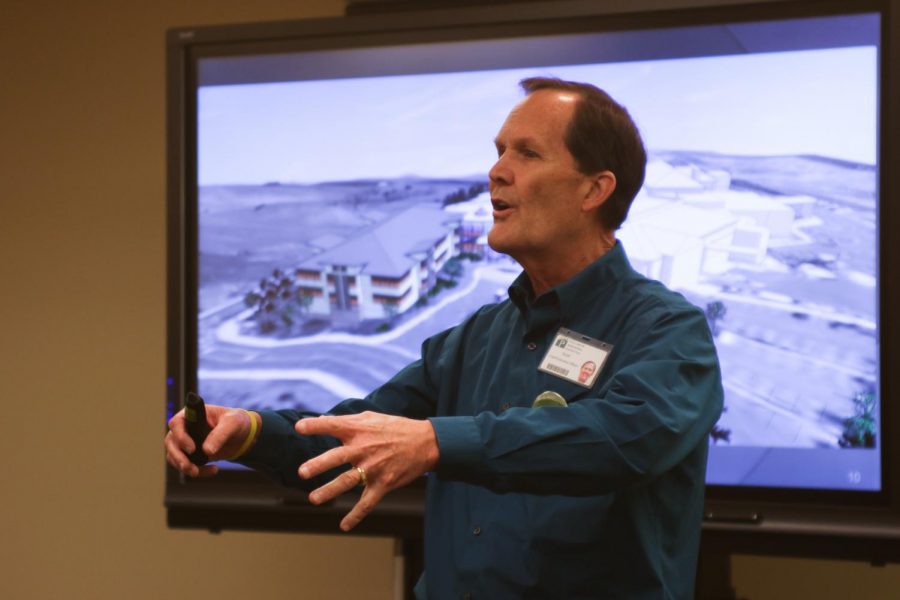Hospital plans for four major projects with bond
New project would cost about $40 million total, PRH CEO says
JACQUI THOMASSON | THE DAILY EVERGREEN
Chief Executive Officer Scott Adams details several ways in which the hospital can expand and improve upon their services on Friday at Pullman Regional Hospital.
February 25, 2019
The Pullman Regional Hospital (PRH) plans to upgrade medical technology and construct a community pavilion with a $29.1 million bond that will be put on the special election ballot on April 23.
PRH CEO Scott Adams said the hospital conducted a community survey and held a summit with 175 people to gather Pullman residents’ opinions on what the hospital could improve.
“We saw that people want health care that you don’t have to try to figure it out yourself, but instead have someone to guide you,” Adams said.
He said an $8.2 million bond passed in 2001 to construct PRH will be paid off in 2020. The newly proposed project would cost about $40 million. The bond would cost Pullman residents about $29.1 million, with the remaining $11 million from the hospital and foundation.
The tax for Pullman residents would depend on the assessed value of their homes, Adams said. The hospital expects the tax rate to cost 99 cents per $1,000 assessed property value, which is the same rate for the bond passed in 2001.
He said if a home has an assessed value of $250,000, the resident would have to pay $250, and it would continue to rise if the value goes up.
He said the hospital plans to complete four major projects if the bond is passed. They want to implement an electronic personal health record system and construct a community health pavilion. They also plan to add to the hospital and upgrade medical technology.
The proposed electronic record system would create centralized scheduling to allow patients to make several appointments rather than one at a time over the course of months, he said. Adams said the electronic record system would also allow other hospitals to have access to a patient’s past medical history.
An attendee raised concerns about implementing care coordinators.
Care coordinators are health professionals, other than one’s doctor, who would schedule appointments and direct patients to the care they need, Adams said.
“That thing with the medical coordinator just scares the pants off of me,” the attendee said.
The attendee said she wanted to know how a care coordinator would know what is best for a patient, rather than talking to a doctor directly.
Adams said the care coordinator would be informed and have the patient’s medical chart in front of them. He also said patients can have the choice to opt-out.
He said WSU students who are not familiar with the healthcare system would benefit from the care coordinators because they would have a person to help them through the process.
Adams said the second and most costly project is a new medical pavilion. Plans for the pavilion would include a women’s and children’s center, offices and other services. It is estimated the pavilion will break ground in 2021, according to a handout.
Additions would include a valet service for patients who need wheelchair accessibility, he said. They also want to move the hospital laboratory to the second floor.
Adams said the additional building would create job openings for care coordinators, transitional care providers, mental health professionals and health educators.
There will be another informational session about the bond March 13 at 5:30 p.m. in PRH conference rooms C and D.










